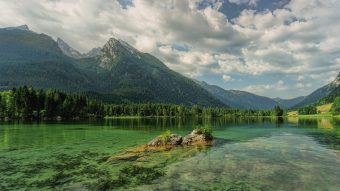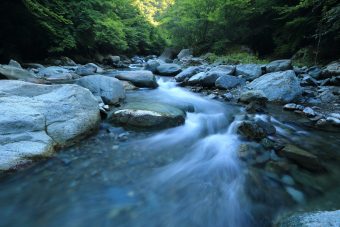
Rivers provide immense benefits and services to people, communities, and the planet—from drinking water to crop irrigation. Unfortunately, invaluable river systems all over the world are under increased stress from damming of free-flowing waters, an uptick in pollutants, overfishing, and more.
WWF partners with governments, businesses, international financial institutions, and communities to ensure healthy rivers exist to conserve wildlife and provide a sustainable future for all. We’ve mapped the world’s free-flowing rivers and help manage freshwater resources in a warming climate.
Rivers enrich our lives and need protection. Here are three ways to support river conservation so we can keep rivers healthy, sustainable, and flowing for generations to come.
More:
Understand the deep connection between rivers and food
When we imagine feeding 7.6 billion people on the planet, we often conjure images of crops or cattle farms. But we should also consider rivers. A new WWF report shows that one-third of global food production and 40 percent of global fish consumption depends on rivers.
And while the contributions of rivers to our food system are now clearer than ever, we are at risk of damaging one of our greatest tools in feeding the planet. Over the past 50 years, we have lost 84 percent of our freshwater species populations, and food systems are responsible for 50 percent of biodiversity loss in freshwater. We are pumping out too much water, catching too many fish, damming free-flowing rivers for hydropower, and flooding rivers with pollutants. If we’re to feed 10 billion by 2050 within our planet’s limits, we have to better protect rivers as one of our greatest resources.
Advocate for low-impact renewable energy
To meet renewable energy targets, hydropower is projected to double by 2050. With that level of development, we would lose most of the world’s remaining long free-flowing rivers and many of the benefits they provide to people and nature. Therefore we must invest in the right renewables in the right places to prevent greater nature loss and harm to communities.

Over 160,000 miles of free-flowing rivers are at risk from planned hydropower dams, including the Okavango, Amazon, and Irrawaddy. These proposed dams would collectively generate less than 2 percent of the renewable energy needed to meet climate targets—a relatively small contribution to tackling the climate crisis that would have devastating consequences for our remaining free-flowing rivers, and the people and wildlife that depend on them.
Engage with local rivers
Many local organizations host clean-up initiatives for local streams and rivers. Volunteering for these initiatives is a great way to familiarize yourself with local waterways and be hands-on in their conservation. Studies also show that spending time outdoors for at least two hours per week has long-term health benefits. So while you’re improving the health of your river, you can improve your own health as well.
If volunteer opportunities are limited, explore fishing, rent a kayak, or just take a stroll along a local waterway. Any time spent connecting with the rivers that sustain us is well-spent.
Source: WWF





